Australians need to “reboot” their diets after a study found they consume more salt than the British or Americans, and are failing to meet targets set by the World Health Organisation.
According to the George Institute for Global Health, Australians consume 8.9g of salt daily, well above guidelines by the international advisory body.
The institute’s Jacqui Webster said the public health benefits of salt reduction could not be stated strongly enough.
“Simply put, reducing salt intake to the WHO target of below 5g per person per day will save tens of thousands of lives at the same time as saving governments hundreds of millions of dollars in health costs,” said Webster.
If average salt intake were reduced by just 3g a day, an estimated 3,500 Australian lives would be saved each year, along with A$200m (US$146m) in health care costs, the George Institute found.
Australia has introduced measures to curb salt consumption, but the study believes that “more can be done to help reduce that sodium content”.
“Around 70% of the salt we eat is hidden in processed foods,” claimed Dr Webster.
In a global review, the institute assessed the progress of countries towards the WHO’s target of a 30% reduction by 2025.
Based on existing published data and country reports, it found Australians were ahead of Americans (8.8g), New Zealand (8.57g), Canada (8.5g) and the United Kingdom (8.1g).
Cyprus had the lowest salt intake of the countries above the WHO guidelines, while Vietnam was the worst offender, its people consuming an average of 15.3g a day.
A total of 75 countries now have a national salt reduction strategy, though only 12 have so far reported a reduction in popular salt intake.
“Salt reduction strategies can include work with the industry, labelling and consumer education programmes,” said Dr Webster, adding that these require government money and greater will by the food industry.
Chips healthier than bran cereal? Health stars suggest that may be the case
Chips can be as healthy as some bran-based cereals, according to the controversial new food rating system in Australia and New Zealand.
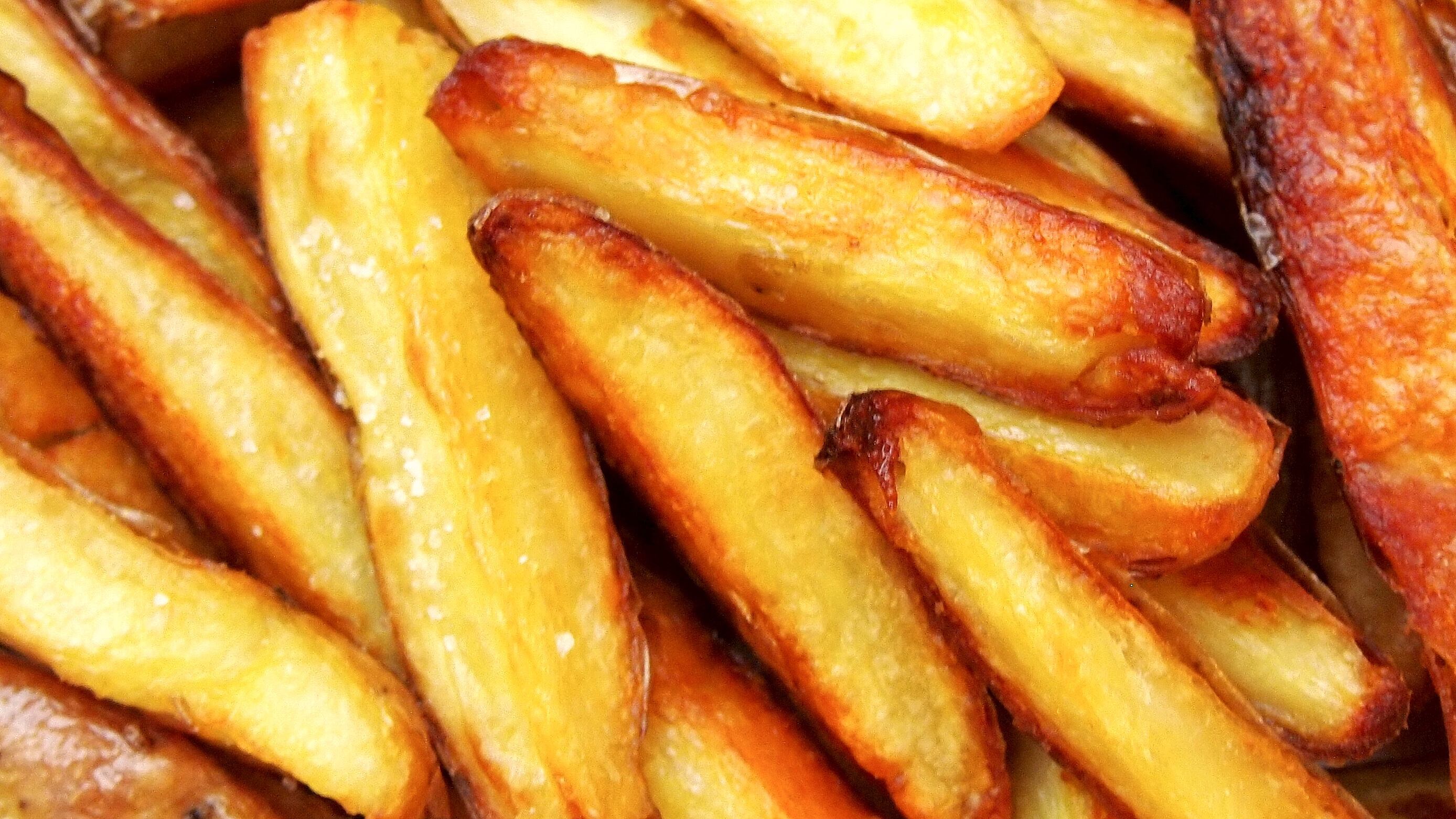
New Zealand Nutrition Foundation chief executive Sue Pollard said the science behind the health star ratings was sound, though it was still not a health claim and consumers should only compare products within a category.
"No food label can be all things to all people,” Pollard said. “The [stars] are an excellent way of comparing processed food within a category… They could lead to some confusion initially, if people compare foods that are substantially different."
To achieve a high health star rating, foods must be low in saturated fat, sugar and salt, and/or high in fibre, protein, fruits, vegetables, nuts or legumes.
Though in Australia, where the same ratings system has also been introduced, some varieties of oven-baked chips were given a higher rating than apples.
Sanitarium New Zealand general manager Pierre van Heerden told Stuff.co.nz that it would take time for the packaging of foods to change to including the ratings, but more would be on the shelves later this year.
The Ministry of Primary Industries added that the system was meant to be simple and uniform, with one standard covering all companies Down Under.
"The system is not about telling consumers what they should be eating,” a spokeswoman told Stuff.
“Instead it allows for consumer choice and aims to make it easier for people to compare similar products and choose the healthier option by taking the guesswork out of reading food labels.”
Gin gaining ground on Australia’s favourite white spirit
Vodka is in danger of losing its place as Australia’s white spirit of choice, with gin slowly but surely advancing on its hegemony.
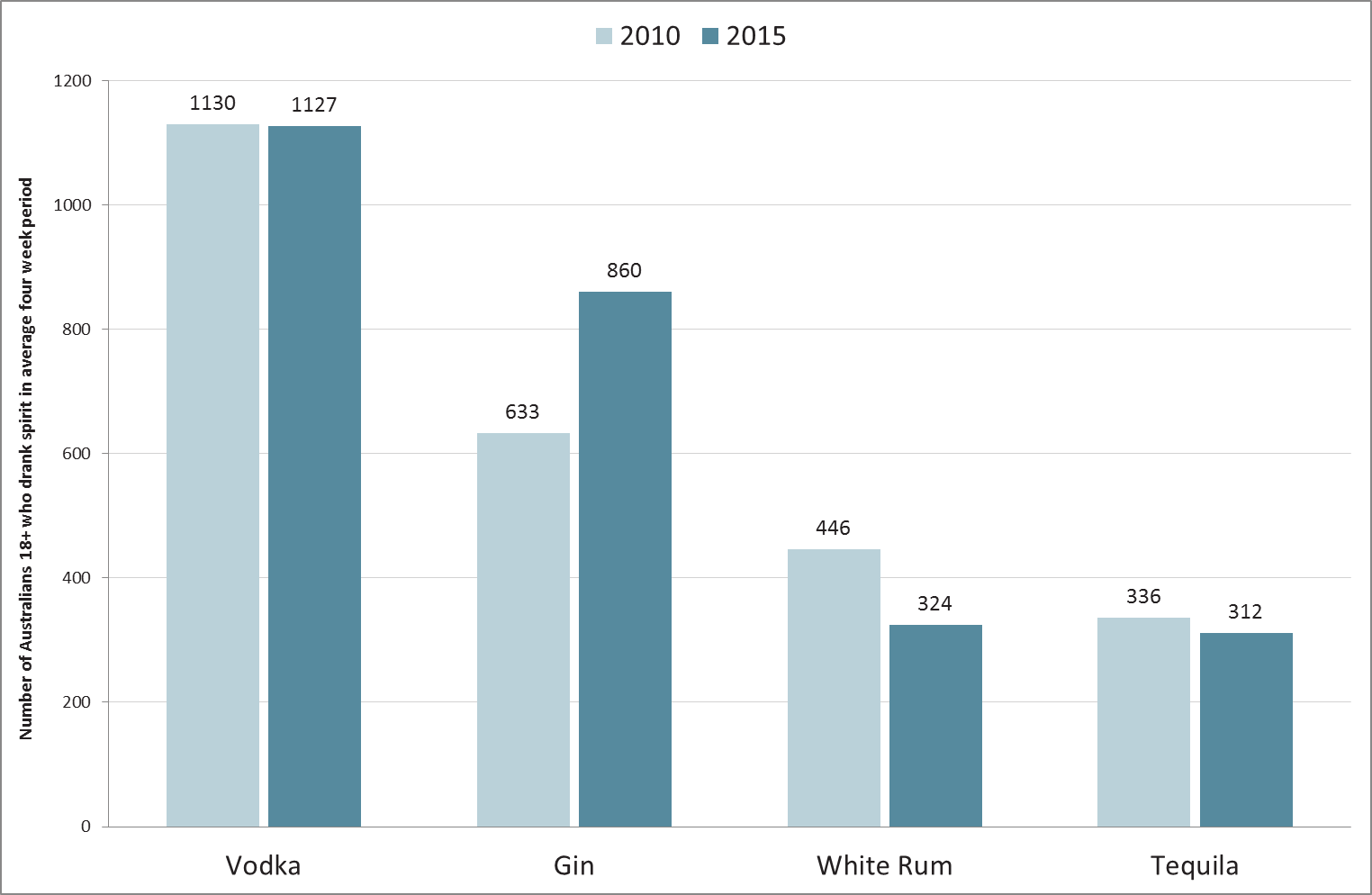
Market research shows that just over 1.1m Australians drink vodka regularly, though this number has stayed pretty constant over the last five years despite Australia’s overall population growth. Over the same period, gin has grown its market to 860,000.
But white rum has fallen out of favour, down 22,000 drinkers to 324,000 now—just ahead of tequila which is only consumed by 312,000 aficionados.
“Gin has gained around 220,000 more drinkers since 2010, and its popularity has increased across all age groups,” said Andrew Price of Roy Morgan Research.
“However brand preferences vary greatly across different age groups. Bombay Sapphire is the top drop among 18-24 year-olds, Tanqueray and niche brands hit the spot with gin drinkers aged 25-49, and Gordon’s—at nearly 250 years old itself—remains the sentimental favourite among those 65 and up.
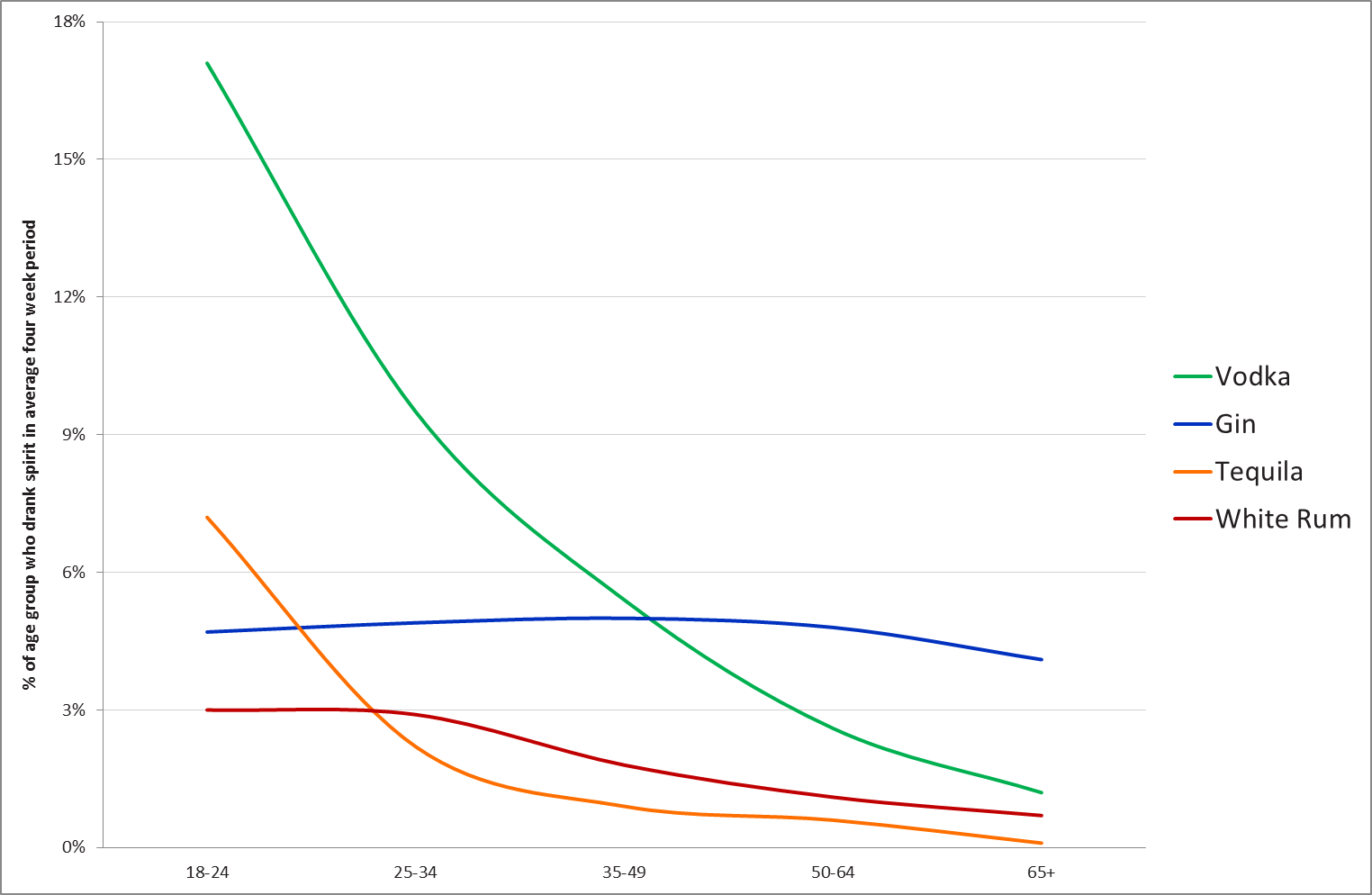
“When it comes to vodka, although the overall number of drinkers is steady… this total comprises a decline of almost 100,000 18-34 year-old consumers, offset by an equivalent increase in drinkers aged 35-plus.”
Unlike vodka, tequila and white rum, gin is a drink at all ages, with its popularity virtually fixed from young to old. Average monthly consumption of gin stays within a narrow range of 4% to 5% across all age groups, while other white spirits skew heavily toward more recently legal tipplers.
Over one in six 18-24 year-olds drink vodka and 7% drink tequila regularly, but the consumption rates of each decline sharply, and continue declining the older Australians get.
“Simply by remaining consistently well-liked, gin has overtaken tequila as the second most popular white spirit among those aged 25-34, and is almost as popular as vodka among those 35-49. By 50 and over, gin has become the clear leader,” said Price.
Supermarkets luring socially aware veggie shoppers away from markets
Roy Morgan Research also found that while locally and organically minded, anti-GM, farmer-friendly shoppers might shop at markets or stalls, they are much more likely to go to the big supermarket chains.
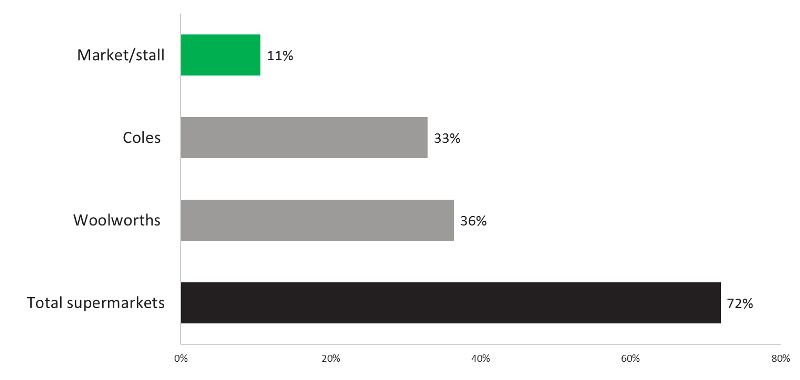
Over 1.5m of these Australians regularly buy their fruit and vegetables from traditional sources, but most will also visit the produce section.
“It’s a clear indication of the supermarkets’ ever-increasing dominance of the category that even people shopping at produce markets during the week can’t help but find themselves also buying some fruit and veg on their next supermarket trip,” said Norman Morris of Roy Morgan.
“Those buying their weekly fruit and veg at a market stall tend to be socially aware, higher-earning younger couples in their late-20s and early-30s, often without kids.
“They enjoy cooking, eating healthily and trying new things. They are cautious about genetic modification and almost 50% more likely than the average to try to buy organic food when possible.”
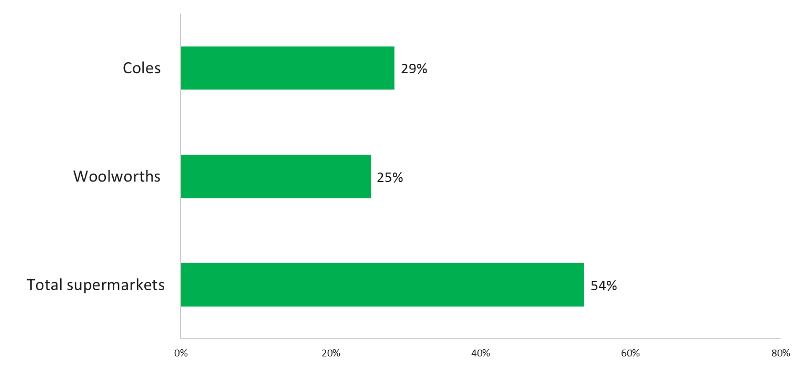
The market researcher also learnt that 11% would visit a market or stall at least once a week, though this figure is dwarfed by the 54% who would also buy their five portions at a supermarket.
Overall, 12.3m Australians—or 87% of grocery buyers—buy fresh fruit and veg. Of thee,10.2m buy from one of the supermarket chains—up from 8.8m in 2011.
Woolworths has a slight lead among the general grocery-buying population, with 5.2m shoppers buying fruit or veg there each week, compared to 4.7 million who do so at Coles.
“To be truly competitive and generate satisfaction and long-term loyalty, supermarkets need to know not just what shoppers look like, do and buy once inside but where else they go, and why,” added Morris.
The week’s regulatory activity
The antipodean food regulator, Fsanz, has revised its food code, which is due to come into effect on March 1, 2016.
The revision has been made mainly to the code’s first two chapters Chapter to clarify key areas such as provisions relating to food additives, processing aids and nutritive substances.
Fsanz has called for submissions on whether to permit a steviol glycoside, rebaudioside M (Reb M), as a new intense sweetener.
Its chief executive, Steve McCutcheon, said the regulator had assessed an application to add it to the same food categories, and at the same maximum levels, as currently permitted steviol glycosides. The closing date for submissions is 10 August 2015.
